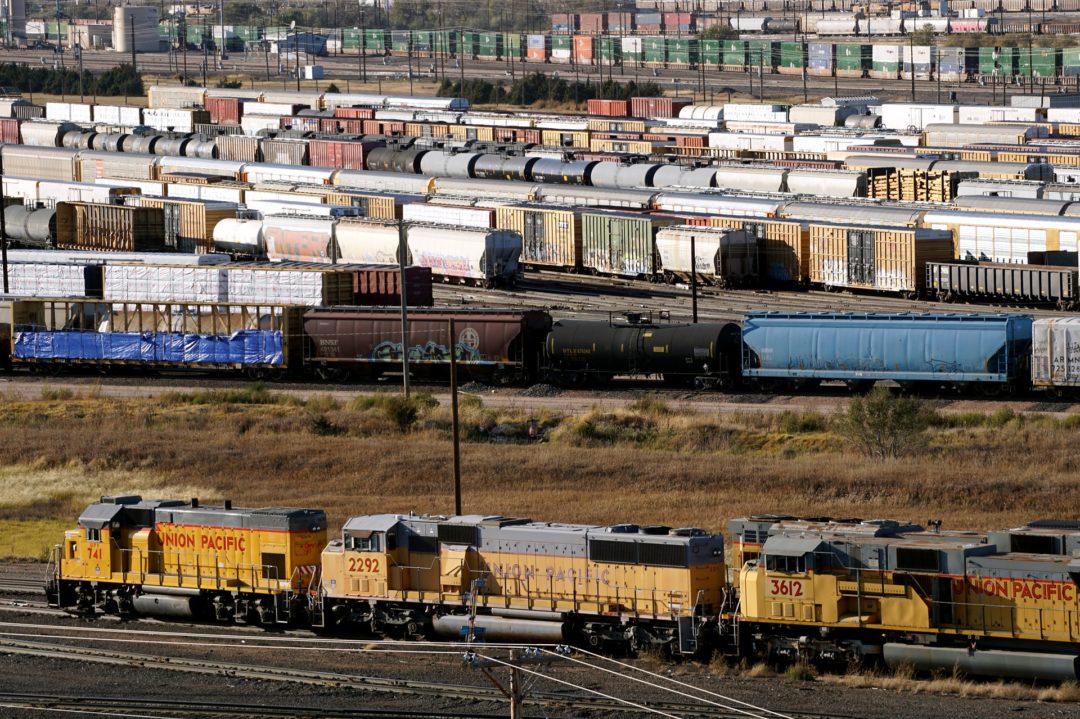Home » Rail freight revenues to grow 4.7% per year through 2025
Rail freight revenues to grow 4.7% per year through 2025
Expansion driven by rise of manufacturers' shipments and U.S. trade activity, forecast says.

The economic rebound from the pandemic recession continues to send ripples through each of the transportation modes, as continuing expansion in manufacturers' shipments and growth in U.S. trade activity will drive demand for rail freight transportation through 2025, a new forecast says.
U.S. rail freight revenues are forecast to advance 4.7% per year in nominal terms through 2025, according to “Freight by Rail: United States,” an industry study from market research firm Freedonia Focus Reports.
That growth would be even higher, but faster gains will be prevented by falling volumes of coal handled, which will decline 1.7% through 2025, the Cleveland-based group said.
Offsetting that product’s slump, two of the rail industry’s highest profit cargoes are expected to notch continued expansion, with the output of chemicals and allied products projected to rise 1.0% annually in real terms to 2025 and production of motor vehicles in volume terms to increase 4.7% to 2025.
The rail industry’s rise will also extend to the related sector of rail transportation support activities, which will see revenues rise 5.9% per year to 2025, Freedonia said. Specifically, gains in rail freight activity and related regulations will continue to drive outsourcing to providers such as those ensuring compliance with positive train control (PTC) technology.
The long-promised PTC systems finally went operational nationwide in 2020, delivering the ability to automatically stop a train before human-related accidents such as train-to-train collisions, over-speed derailments, incursions into established work zones, and movements of trains through switches left in the wrong position.
RailU.S. rail freight revenues are forecast to advance 4.7% per year in nominal terms through 2025, according to “Freight by Rail: United States,” an industry study from market research firm Freedonia Focus Reports.
That growth would be even higher, but faster gains will be prevented by falling volumes of coal handled, which will decline 1.7% through 2025, the Cleveland-based group said.
Offsetting that product’s slump, two of the rail industry’s highest profit cargoes are expected to notch continued expansion, with the output of chemicals and allied products projected to rise 1.0% annually in real terms to 2025 and production of motor vehicles in volume terms to increase 4.7% to 2025.
The rail industry’s rise will also extend to the related sector of rail transportation support activities, which will see revenues rise 5.9% per year to 2025, Freedonia said. Specifically, gains in rail freight activity and related regulations will continue to drive outsourcing to providers such as those ensuring compliance with positive train control (PTC) technology.
The long-promised PTC systems finally went operational nationwide in 2020, delivering the ability to automatically stop a train before human-related accidents such as train-to-train collisions, over-speed derailments, incursions into established work zones, and movements of trains through switches left in the wrong position.
KEYWORDS Freedonia Focus Reports
Related Articles
Copyright ©2024. All Rights ReservedDesign, CMS, Hosting & Web Development :: ePublishing